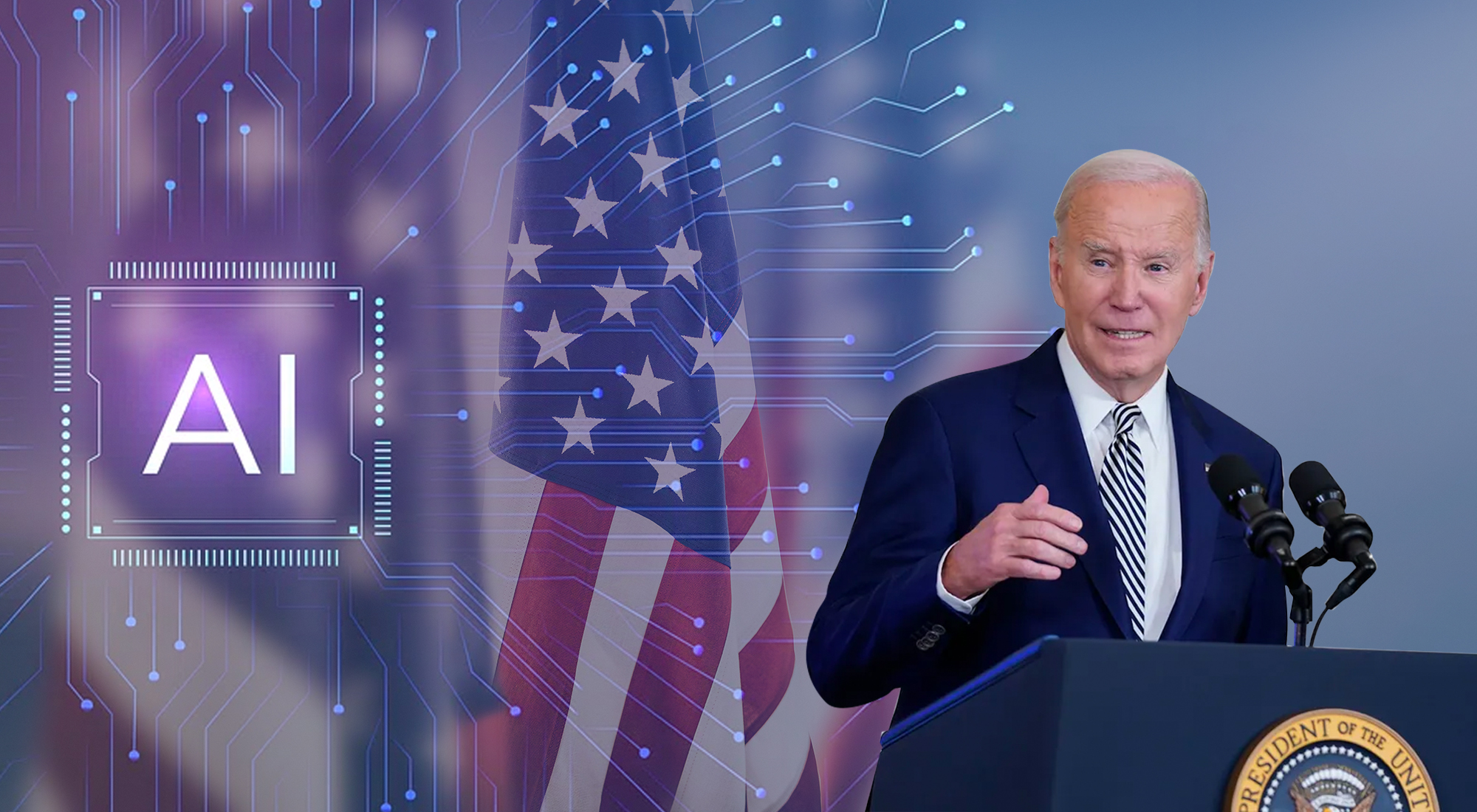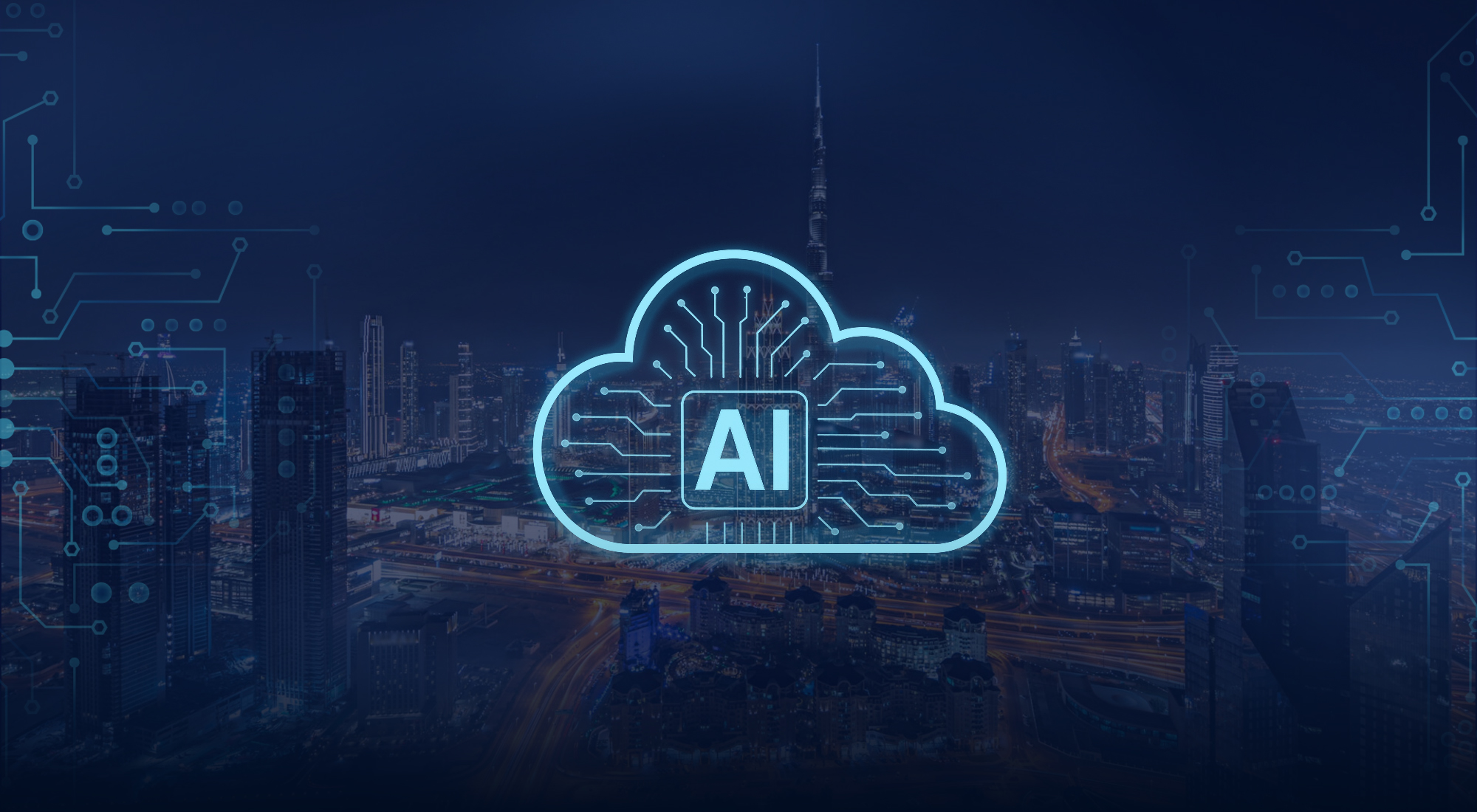As OpenAI, the
American artificial intelligence research and deployment company, celebrates the
one-year anniversary of its launch of ChatGPT, the media, academia, civil
society, the private sector, and world governments have all since tried to discern the
potential benefits versus the risks of AI’s impending impact
on society.
Regulation
surrounding AI’s safety and security has continued to lag behind the pace at
which AI technology is currently being developed. AI is developing so quickly that governments and their regulatory bodies are now trying to
catch up, wondering how to control something that
has already taken off like wildfire. AI is Pandora’s box, brimming with endless possibilities while undoubtedly rife with
potentially unknown hazards.
As the world of
governance attempts to pull alongside the tech industry, which has already
begun interweaving AI into endless facets of the consumer marketplace as well
as the healthcare, education, and defense sectors, U.S. President Joe Biden pulled
the brakes last week, signaling it was time for the U.S. government to
implement an all-hands-on-deck approach to control the growth of artificial
intelligence.
President
Biden’s Executive Order Calls for Increased AI Safety and
Guardrails
On 30 October,
President Biden announced the signing of an Executive Order (EO), which aims to
promote the responsible development and innovation of artificial intelligence.
The EO, which took nearly a year to craft, includes input
from Homeland Security and the Department of Defense in order to address
concerns over AI’s potential impact on public health and national security.
Considering the unethical exploitation of AI can lead to an increase in
algorithmic discrimination, the EO also calls for increased measures to ensure
artificial intelligence advances equity and civil rights. Algorithmic
discrimination can occur when automated systems arbitrarily favor one group of
people over another based on a person’s race, ethnicity, or gender.[1]
More
specifically, the EO mandates all companies developing generative artificial
intelligence models that pose a risk to national security, economic security,
or public health to share their safety test results, along with any
other critical information, with the U.S. government,[2] a directive that is expected to spark doubt and hesitation among
industry leaders. In an interview with Reuters, Bradley Tusk, CEO at Tusk
Ventures, stated, “Tech companies would likely shy away from sharing
proprietary data with the government over fears it could be provided to
rivals.”[3]
In order to
ensure AI systems operate under their intended function and remain impermeable
to misuse by malign actors, the EO also calls for the development of
standardized evaluations of complex AI systems. The National Institute of
Standards and Technology has been tasked with the authority of developing a
series of policies, testing protocols, and rigorous standards that will be used to
verify the safety, security, and trustworthiness of AI systems before the
technology is unveiled to the public sphere. As the potential of cybersecurity
hacks of critical infrastructure has long remained a threat to national
security, the Department of Homeland Security has been entrusted with the establishment of the AI Safety
and Security Board, which will apply similar testing protocols and standards to key
infrastructure sectors across the country.
To ensure
additional layers of protection are implemented at a national scale, both the
Department of Homeland Security and the Department of Energy have been tasked
with addressing AI systems most urgent security risks ‘with respect to
biotechnology, cybersecurity, critical infrastructure, and other national
security dangers.’[4]
The Risk of
AI-Induced Personal and Financial Fraud
Protection
against AI–enabled fraud also remains a high priority for the Biden
Administration. During a press conference following the signing of the EO,
Biden facetiously commented that AI fraudsters have the ability to exploit
voice cloning technology with such accuracy that today’s generative AI has the
capacity to fool even one’s friends and family. Yet the dangers of AI–generated deep fakes,
particularly photographs, imagery, and ‘voice overs’, have
potentially far deeper consequences, especially as artificial intelligence
technology continues to rapidly develop.
There is a
rising concern that AI technology will be optimized to streamline online
financial fraud through the exploitation of personal biometric data, whereby
cybercriminals create new identities with stolen or fabricated information,
known as ‘synthetic identity fraud.’ According to the financial consulting firm
Deloitte, synthetic identity fraud is projected ‘to generate at least US$23
billion in losses by 2030, prompting many banks and fintechs to develop more
advanced biometric security systems to weed out would-be perpetrators.’[5]
Considering the
potential of such massive financial risk, President Biden’s EO authorized the
Department of Commerce to develop guidelines and best practices for AI safety
and security, including assessing and auditing AI capabilities with a strong
emphasis on cybersecurity and biosecurity risks. In order to reduce the risk of
exposure to synthetic content, the EO urges the development of science-backed
techniques to assist the public in identifying AI–generated
information through the use of watermarking or other detection technology.
Existing AI
image detection software, at least those made available to the public, currently remains in a nascent
stage. In July 2023, the New York Times put five AI-detection software
to the test in order to gauge their ability to detect
deep-fake images. Detection software relies on sophisticated algorithms that are able to
distinguish AI–generated images from those taken by a camera – or even artwork.
The Times found that while the detection technology is rapidly
progressing, it still falls short in detecting every single fake, even those that are the most
obvious. For example, two out of five AI image detection software confirmed
that an image of X CEO Elon Musk in an embrace with what appears to be a robot
with a female human head was indeed real.[6]
AI Insight
Forum: Leaders of the Tech World Unite in Washington
In September
2023, Senate Majority Leader Chuck Schumer invited a group of two dozen tech
executives, including Elon Musk and Bill Gates, Meta’s Mark Zuckerberg, and
Google CEO Sundar Pichai, along with industry advocates and skeptics, to
attend a forum on Capitol Hill to share with lawmakers their views of what
meaningful AI legislation should look like.[7]
While the majority of lawmakers from both sides of the isle agreed there must
be some form of government oversight in place, there remained
a lack of consensus on how to move forward.
Some Republican members have voiced concerns regarding overregulation, a standard
party talking point, as the GOP has historically opposed any form of extensive
government regulation. Following the event, Elon Musk told reporters it was
important for the tech titans in attendance “to have a referee,” adding that
establishing AI regulations would ensure “companies take actions that are safe
and in the interest of the general public.”[8]
Following
September’s AI Insight Forum, Senator Schumer organized a follow-up session in
October, inviting a bipartisan group of U.S. Senators along with a group of
leading financial lenders, academics, civil society, and tech-industry experts
to discuss how to harness AI’s potential to enable innovation. In his opening
remarks, Senator Schumer noted “AI could be our most spectacular innovation yet, a force that
can ignite a new era of technological advancement, scientific discovery, and
industrial might.” Nonetheless,
Schumer added that if artificial intelligence is not managed safely and proper
guardrails are not put into place, such a scenario ‘could stifle or even halt
innovation altogether.’[9]
Developing a Global Approach to AI Regulations
As our
globalized approach to technology requires more than a one-size-fits-all
approach, the EO also underscores the importance of the U.S. working with its
allies and partners abroad to develop an international framework mandating the
safety and usage of AI. Two days following the announcement of the Executive
Order, Vice–President Kamala Harris travelled to London to participate in
Britain’s landmark AI Safety Summit. The global gathering, which hosted
25 nations, including the U.S. and China, resulted in the signing of a landmark
agreement dubbed the ‘Bletchley Declaration,’ which
acknowledges ‘risks arising from AI are inherently international in nature’ and
should be addressed through international cooperation.[10]
The declaration also recognizes that ‘AI systems are already deployed
across many domains of daily life, including housing, employment, transport, education, health,
accessibility, and justice, and their use is likely to increase,’ adding that
because AI is already woven into the fabric of society, now is the
time to act and regulate accordingly.[11]
During the same
week, the Group of Seven (G7) agreed to a ‘code of conduct’ intended for
companies that develop advanced artificial intelligence systems. The 11 guiding
principles, which are voluntary, aim to ensure organizations that develop AI
systems promote ‘safe, secure, and trustworthy AI worldwide.’ The objective of
the guiding principles is to encourage AI developers to identify and mitigate
potential risks and to report on any misuse once their products are launched
into the market.[12]
The code of conduct calls on AI developers to invest heavily in security
controls to limit exploitation or fraudulent use of complex AI systems. The G7
advises companies to abide by the arbitrary guidelines until ‘governments
develop more enduring and/or detailed governance and regulatory approaches.’[13]
National
Security Concerns
A chronic
concern for governments will remain the existential risk AI systems may pose,
especially if exploited to undermine national security or public health by
malign actors, both foreign and domestic. Underscoring the broad extent to which
such risks can impact all facets of society, ranging from critical
infrastructure to nuclear and cybersecurity systems, the G7 Code of Conduct
also urges AI developers to avoid designing systems that both fundamentally
‘undermine democratic values’ and those that can ‘facilitate terrorism, enable
criminal misuse, or pose substantial risks to safety, security, and human
rights.’[14]
Conversely, the
intelligence community must also react accordingly to the rise of rapidly
evolving artificial intelligence. In a recent interview, the Central
Intelligence Agency’s (CIA) Director of Artificial Intelligence, Lakshmi Raman, stated that AI will
undoubtedly disrupt how the intelligence business operates.[15]
AI has already begun to rewrite the playbook in terms of how the intelligence
community disseminates intelligence and gathers information. Traditional intelligence tradecraft must
follow at a consistent pace with today’s evolving advanced AI technologies
through increased rapprochement with the tech industry to ensure
the U.S. government stays one step ahead of its challengers.
Artificial
Intelligence and the U.S.-China strategic Relationship
In 2017, China, America’s
fiercest competitor, announced its highly ambitious program for domestic
development of artificial intelligence with the goal of becoming the world’s ‘major AI
innovation center’ by 2030,[16] although today’s figures speak otherwise. The U.S. currently far
surpasses China in AI investments, spending $47.4 billion in 2022, nearly three
and a half times the amount compared to China’s investment of $13.4 billion.[17]
In October
2022, in an attempt to restrict Chinese access to AI
processor chips, which are essential in driving the computing power of extensive AI
systems, the U.S. Department of Commerce’s Bureau of Industry and Security
implemented a series of export controls that limited China’s
ability to purchase and manufacture high-end chips used for military
applications.[18]
A year later,
the Biden Administration announced additional export controls for AI chips and
chipmaking tools. Expanding upon previous measures, the recent controls were
intended to ‘close loopholes’ – mainly the restriction of exports to Russia and
Iran – in order to
prevent transshipments from eventually landing in China. According to U.S.
Commerce Secretary Gina Raimondo, the objective of the restrictions was to
‘prevent Chinese access to advanced semiconductors that could fuel
breakthroughs in artificial intelligence, especially with military uses.’[19]
The United
States’ relationship with China is considered the most complex bilateral
relationship for Washington, framed primarily around strategic
competition. Further advancements in AI will play a critical role in the
dynamics of the future trajectory of the U.S.-Sino relationship, especially as
AI developers tailor their products to boost defensive capabilities, allowing
AI to tip the scales in terms of competitive advantage and geopolitical
balance.
Conclusion
President
Biden’s signing of the Artificial Intelligence Executive Order will be the
first of many measures
designed to safeguard the expanding role and impact AI systems have as they
continue to be interwoven throughout all facets of society. While the proposed
guidelines are meant to serve as a critical guardrail, the responsibility of
enacting enforceable legislation remains with Congress. At a time when America
is experiencing some of its deepest political polarization, U.S. lawmakers
should be mindful when recalling the saying, “A house divided
cannot stand.”
Although the
Biden Administration’s EO is comprehensive in its proposed efforts, it
nonetheless has limited power. More importantly, the EO can be reversed by
future administrations as it is not legally binding. At present, the EO can only
function within the confines of existing authorities and executive branch
agencies.[20]
President Biden has urged Congress to pass AI legislation, which would
maintain the legal authority to rein in AI technology with enforceable powers. Remarkably, heavily
regulating AI is one of the few areas that receives bipartisan support among
Americans. According to a Morning Consult poll conducted this past June, more
than half of registered U.S. voters, including 57% of Democrats and 50% of
Republicans, support rigorous regulation of AI development, including creation of new regulatory
bodies specifically
designed to oversee it.[21]
Although the
suggestion of passing AI legislation has received, in theory,
bipartisan support, Washington currently remains preoccupied with a looming
government shutdown, dual conflicts in Ukraine and Gaza, and, not to
mention, a presidential election less than a year away. The probability of
passing legislation during campaign season, only to give President
Biden an electoral boost, is nothing short of a ‘deep fake’ reality.
[1]
“Algorithmic
Discrimination Protections,” The White House, https://www.whitehouse.gov/ostp/ai-bill-of-rights/algorithmic-discrimination-protections-2/#:~:text=Algorithmic%20discrimination%20occurs%20when%20automated,orientation)%2C%20religion%2C%20age%2C.
(Date retrieved November 7, 2023).
[2]
“FACT SHEET: President Biden
Issues Executive Order on Safe, Secure, and Trustworthy Artificial Intelligence,”
The White House, October 30, 2023, https://www.whitehouse.gov/briefing-room/statements-releases/2023/10/30/fact-sheet-president-biden-issues-executive-order-on-safe-secure-and-trustworthy-artificial-intelligence/.
[3]
Jeff Mason, Trevor Hunnicutt and Alexandra Alper, “Biden administration aims to
cut AI risks with executive order,” Reuters, October 31, 2023, https://www.reuters.com/technology/white-house-unveils-wide-ranging-action-mitigate-ai-risks-2023-10-30/.
[4]
“Executive Order on the
Safe, Secure, and Trustworthy Development and Use of Artificial Intelligence,” The
White House, October 30, 2023, https://www.whitehouse.gov/briefing-room/presidential-actions/2023/10/30/executive-order-on-the-safe-secure-and-trustworthy-development-and-use-of-artificial-intelligence/.
[5]
Satish Lalchand, Val Srinivas, and Jill Gregorie, “Using biometrics to fight back against
rising synthetic identity fraud,” Deloitte,
July 27, 2023, https://www2.deloitte.com/xe/en/insights/industry/financial-services/financial-services-industry-predictions/2023/financial-institutions-synthetic-identity-fraud.html.
[6]
Stuart A. Thompson and Tiffany Hsu, “How Easy Is It to Fool A.I.-Detection Tools?” The New
York Times, June 28, 2023, https://www.nytimes.com/interactive/2023/06/28/technology/ai-detection-midjourney-stable-diffusion-dalle.html.
[7]
Mary Claire Jalonick and Matt O’Brien, “Tech industry leaders endorse regulating artificial intelligence
at rare summit in Washington,” Associated Press, September 14, 2023, https://apnews.com/article/schumer-artificial-intelligence-elon-musk-senate-efcfb1067d68ad2f595db7e92167943c.
[8]
David Shepardson, Moira Warburton and Mike Stone, “Tech titans meet US
lawmakers, Musk seeks ‘referee’ for AI,” Reuters, September 14, 2023, https://www.reuters.com/technology/musk-zuckerberg-gates-join-us-senators-ai-forum-2023-09-13/.
[9]
“Majority Leader
Schumer Opening Remarks At The Senate’s Second AI Insight Forum,” Senate
Democrats, October 24, 2023, https://www.democrats.senate.gov/newsroom/press-releases/majority-leader-schumer-opening-remarks-at-the-senates-second-ai-insight-forum.
[10]
“The Bletchley
Declaration by Countries Attending the AI Safety Summit, 1-2 November 2023,” UK
Government, November 1, 2023, https://www.gov.uk/government/publications/ai-safety-summit-2023-the-bletchley-declaration/the-bletchley-declaration-by-countries-attending-the-ai-safety-summit-1-2-november-2023.
[11]
Ibid.
[12]
Foo Yun Chee, “Exclusive:
G7 to agree AI code of conduct for companies,” Reuters, October 29, 2023, https://www.reuters.com/technology/g7-agree-ai-code-conduct-companies-g7-document-2023-10-29/.
[13]
“Hiroshima Process
International Guiding Principles for Advanced AI system,” European
Commission, October 30, 2023, https://digital-strategy.ec.europa.eu/en/library/hiroshima-process-international-guiding-principles-advanced-ai-system.
[14]
Ibid.
[15]
“A Conversation with
Lakshmi Raman at POLITICO’s AI & Tech Summit,” Politico, September 28, 2023, https://www.politico.com/video/2023/09/28/a-conversation-with-lakshmi-raman-at-politicos-ai-tech-summit-00118914.
[16]
“China’s ambitions in
artificial intelligence,” European Parliament, https://www.europarl.europa.eu/RegData/etudes/ATAG/2021/696206/EPRS_ATA(2021)696206_EN.pdf. (Date retrieved November
11, 2023).
[17]
“Artificial
Intelligence Index Report 2023: Chapter 4: The Economy,” Standford
University, 2023, https://aiindex.stanford.edu/wp-content/uploads/2023/04/HAI_AI-Index-Report-2023_CHAPTER_4.pdf.
[18]
“Commerce Implements New
Export Controls on Advanced Computing and Semiconductor
Manufacturing
Items to the People’s Republic of China (PRC),” Bureau of Industry and
Security, U.S. Department of Commerce, October 7, 2022, https://www.bis.doc.gov/index.php/documents/about-bis/newsroom/press-releases/3158-2022-10-07-bis-press-release-advanced-computing-and-semiconductor-manufacturing-controls-final/file.
[19]
Kif Leswing, “U.S.
curbs export of more AI chips, including Nvidia H800, to China,” CNBC,
October 17, 2023, https://www.cnbc.com/2023/10/17/us-bans-export-of-more-ai-chips-including-nvidia-h800-to-china.html#:~:text=The%20U.S.%20Department%20of%20Commerce,chips%2C%20senior%20administration%20officials%20said.
[20]
“Experts react: What
does Biden’s new executive order mean for the future of AI?” Atlantic
Council, October 30, 2023, https://www.atlanticcouncil.org/blogs/new-atlanticist/experts-react/experts-react-what-does-bidens-new-executive-order-mean-for-the-future-of-ai/.
[21]
“AI Regulation Takes
Baby Steps on Capitol Hill,” TIME, September 14, 2023,
https://time.com/6313892/ai-congress-regulation-hearings/.









